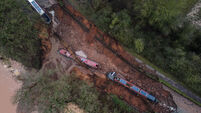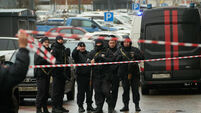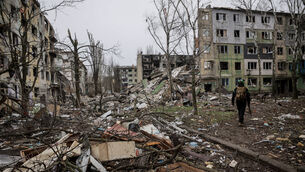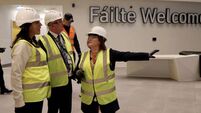Missed call led to mid-air near disaster
A missed call to climb to a higher altitude led to a mid-air ‘‘near disaster’’ involving an F15 military fighter and a holiday jet carrying 234 passengers, an official accident report disclosed today.
In one of the most serious UK near-misses recorded, the American F15, which failed to hear the climb instruction, passed so close that the Britannia Airways Boeing 757 was caught up in its wake turbulence.
At their closest, the two aircraft were separated by less than the minimum range - 115 metres - that can be detected by radar, said the report.
From the Air Accidents Investigation Branch, the report said that the F15 was one of two from the US air force base at Lakenheath in Suffolk that were involved in an exercise in the area over Daventry in Northamptonshire on the morning of November 22 last year.
Controllers looking after the F15 did not, at first, realise it was one of two but there was no evidence that this confusion caused the incident, said the report.
Instead the incident was ‘‘the result of the crew of the second F15 not hearing and taking action on a radio call’’ clearing it to climb to 11,000ft from its position of 10,000ft.
Having not heard the instruction, the F15’s two pilots noticed their radar showed the other F15 was above them and they began a discussion of this.
This led to their missing ‘‘at least two other transmissions’’ that might have led them to realise they had failed to climb to the required height, said the report.
The crew of the Britannia, which had taken off from Birmingham airport for Paphos in Cyprus, had been informed of the first F15 but then suddenly became aware ‘‘of an aircraft in their left ‘‘half-past ten’’ position at very close range and about the same level’’.
The AAIB report went on: ‘‘The aircraft ... passed rapidly across the Boeing 757’s nose and disappeared down their right side.
‘‘The 757 crew heard the noise of the F15’s engines and their aircraft encountered its wake turbulence. There was no time for the Boeing crew to take avoiding action.’’
The report added that one of the F15 crew had been vaguely aware of a ‘‘shadow’’ flashing rapidly down his right side.
It was only after learning that the Boeing crew had filed an Airprox (near miss) report that the F15 crewman realised what had happened. His colleague saw nothing of the Boeing, said the report.
Only the lead fighter was transmitting a Secondary Surveillance Radar (SSR) code, known as a squawk.
The report added that ‘‘the lack of a squawk from the second F15 rendered air traffic controllers blind to the developing situation’’.
This lack of radar transmission meant that high-tech collision avoidance systems were rendered inoperable.
The report said that had these systems been ‘‘able to act as a safety net in this incident, what was a near disaster would more likely have been a disconcerting, but relatively low risk, loss of separation.’’
The AAIB recommended that the Civil Aviation Authority and National Air Traffic Services bring in procedures to ensure that aircraft operating in formation use SSR.














